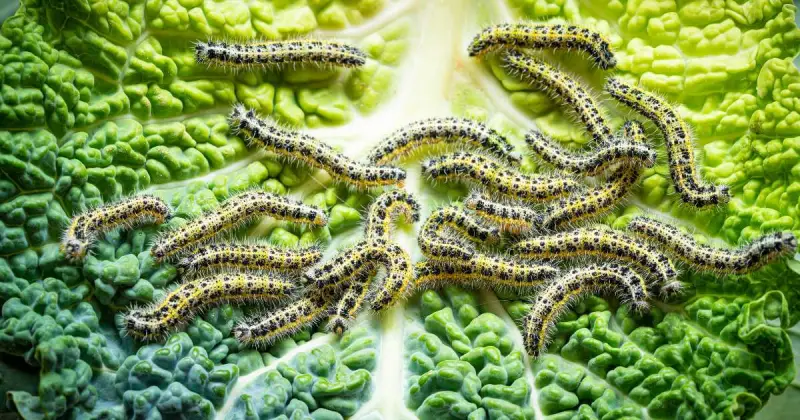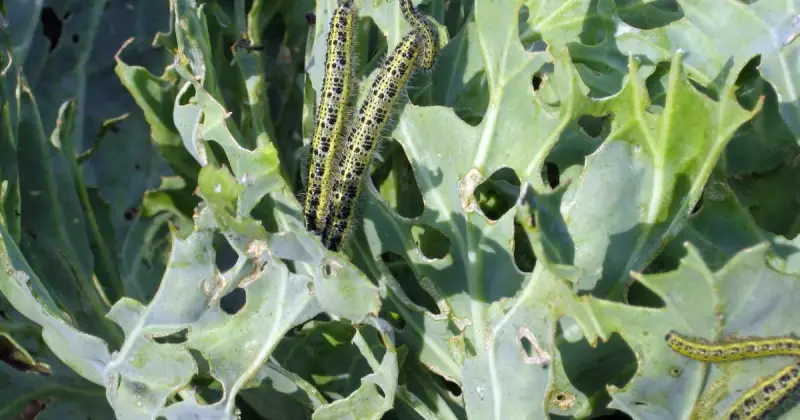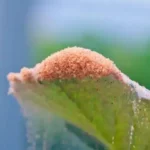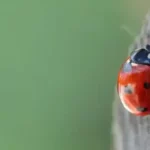Dealing with those pesky cabbage worms ruining your crop can be frustrating. You’re not alone if you’ve ever felt disheartened seeing your hard work destroyed. It’s time to take action and reclaim your cabbage patch! So if you’ve ever asked yourself, ‘How do I get rid of cabbage worms’, let me guide you through practical solutions to rid your plants of these unwanted pests and restore your garden to its former beauty.
To get rid of cabbage worms in the garden, you can try several methods:
- Hand-picking: Inspect plants regularly and remove any cabbage worms you find by hand.
- Natural predators: Encourage natural predators of cabbage worms, such as parasitic wasps, ladybugs, and birds, by planting a diverse range of plants and avoiding pesticides that harm beneficial insects.
- Floating row covers: Use floating row covers to physically block cabbage worms from accessing plants. Be sure to remove covers during flowering to allow for pollination.
- Diatomaceous earth: Sprinkle food-grade diatomaceous earth around the base of plants to create a barrier that damages the soft bodies of cabbage worms.
- Bt (Bacillus thuringiensis): Use a biological pesticide containing Bt, a naturally occurring bacterium that targets cabbage worms and other caterpillars. Apply according to the label instructions.
- Crop rotation: Rotate crops each season to disrupt cabbage worms’ life cycles and reduce their populations in the garden.

As you continue reading, you’ll discover simple yet effective methods to naturally deter cabbage worms from wreaking havoc on your beloved plants.
From organic remedies to preventative measures, you’ll be equipped with the knowledge to safeguard your garden from pests and ensure a bountiful harvest. So, without further ado, let’s get started fighting back against these tiny yet destructive invaders, enjoy a thriving garden, and reclaim our grub!
Humble Highlights
- Discover these innovative, unique, and eco-friendly practices to keep cabbage worms from destroying your hard-earned work in the garden so you can effectively target and help prevent these insects from decreasing harvests.
- Save time by discovering these 3 crucial strategies for keeping cabbage worms at bay AND why you should regularly inspect your garden for these notorious pests to ensure healthier, more productive crops while reducing the need for chemical pesticides.
- Save money AND your garden’s organic integrity with these 3 natural control methods to fight back against cabbage worms so you can preserve the appearance of your green space and provide a more visually appealing and well-kept garden!
Identifying Cabbage Worms
To identify cabbage worms, closely examine the velvety green larvae with faint yellow stripes found on the foliage of cabbage, cauliflower, broccoli, and other brassica crops. These young larvae, also known as imported cabbage worms, typically reside on the undersides of leaves. They feed voraciously on the foliage, often leaving behind pockmarked leaves or only the stems.

Their distinct appearance, with a subtle yellow stripe running along their bodies, aids in their identification. When inspecting your plants, pay close attention to these characteristics to accurately spot and control cabbage worm infestations. By being vigilant and recognizing these velvety green pests before they wreak havoc among your plants, you can take targeted measures to protect your crops from their damaging effects. 1
As with any uninvited backyard garden pest, correctly identifying cabbage worms is always the first step towards effectively managing their presence in your garden or farm, ensuring the health and vitality of your leafy vegetables.
Preventing Cabbage Worm Infestations
To prevent cabbage worm infestations, employ strategic crop rotation practices with different plants to disrupt the pests’ life cycle. Rotating cabbage crops with various plants can help break the cycle of cabbage worms and reduce their numbers in your garden. Additionally, maintaining a clean garden free of debris can minimize hiding spots for cabbage worm eggs, further preventing infestations.

Consider these strategies to deter cabbage worms from harming your crops:
- Interplanting: Plant mint, thyme, or rosemary near your cabbage to discourage cabbage worms from infesting your crops. These unique herbs, with their strong scents, can help repel cabbage worms. They can also be interplanted with susceptible crops to help deter cabbage worms and reduce the need for chemical controls. 2
- Trap Crops: This tried-and-true technique attracts cabbage worms away from the main crop, serving as a sacrificial planting. Some popular trap crops that can help reduce the damage inflicted by cabbage worms include Borage, Radishes, Mustard Greens, and Nasturtiums.
- Companion Planting: This practice involves planting certain plants near cabbage and other brassicas to repel or deter cabbage worms. In addition to the thyme, mint, and rosemary mentioned above, onions, garlic, and marigolds help tremendously in protecting your brassicas and reducing the need for chemical controls.
Regularly inspecting your plants for early signs of cabbage worm infestation will enable you to take prompt control measures, such as introducing natural predators like parasitic wasps or using floating row covers to shield your crops.
Cabbage worms love brassica crops, including collards, Brussels sprouts, cauliflower, and broccoli. Their handiwork is typically noticed with holes forming in the leaves of your plants and expanding if left unchecked. Fortunately, the short video below explains how you can minimize the damage of these harmful invaders, protect your plants, and amend your garden’s ecosystem.
Natural Control Methods For Cabbage Worms
Beneficial insects like parasitic wasps are essential for naturally controlling cabbage worms in your garden. To effectively manage cabbage worm infestations using natural methods, consider these techniques:
- Companion Plants: Plant mint or thyme near your cabbage to deter cabbage worms. The strong scents confuse and repel the pests, reducing the risk of infestation.
- Manual Removal: Be vigilant about handpicking caterpillars and their eggs off your leafy brassicas. Regularly inspect leaves and eliminate any eggs or caterpillars to prevent damage.
- Row Covers: Use row covers to block adult butterflies from laying eggs on your cabbage plants. By preventing pests’ access, you can reduce cabbage worm infestations. 3

Using Beneficial Insects Against Cabbage Worms
Introducing Trichogramma wasps to your garden provides a natural and efficient solution for managing cabbage worm infestations. These beneficial insects function as a natural biological control by parasitizing cabbage worm eggs.
Trichogramma wasps deposit their eggs inside the eggs of cabbage moths, preventing them from hatching and decreasing the population of damaging cabbage worms. This environmentally friendly approach helps combat cabbage worm damage and promotes a balanced ecosystem in your garden. 4
Organic Products For Cabbage Worm Control
When addressing cabbage worms organically, Neem oil stands out for its insecticidal properties. Here are three organic solutions for effective cabbage worm control:
- Neem oil: This natural insecticide, derived from neem tree seeds, disrupts cabbage worms’ growth and development, leading to their elimination.
- Bacillus thuringiensis var. kurstaki (Bt): A bacterial pesticide specific to caterpillars like cabbage worms, Bt releases toxins upon ingestion, disintegrating their gut and controlling their numbers.
- Diatomaceous earth: A powdery substance from fossilized aquatic organisms, diatomaceous earth dehydrates and cuts through cabbage worms’ protective outer layer, causing their desiccation and demise. 5

Conclusion
You can effectively tackle cabbage worms by staying vigilant and closely monitoring your cabbage plants. Manual removal, yellow sticky traps, Neem oil spray, and natural predators like Trichogramma wasps are valuable tools in your pest control arsenal.
Remember, just as a gardener nurtures their plants, you can protect the health of your cabbage crop with consistent dedication and care – just as a backyard gardener should. Keep at it, and you’ll soon see those cabbage worms and their trail of destruction decrease, allowing your garden to flourish again.
Have you been able to effectively combat intrusive cabbage worms in your garden? Perhaps you’ve used one of the methods listed here or something else entirely. We’d love to hear about your success. Comment below and let us know how you protect your green friends!
SOURCES
- Wikipedia – Cabbage Worm
- Oxford Academic – Control Of Worms On Cabbage
- National Library Of Medicine, National Center For Biotechnology Information – Current Biological Approaches For Management Of Crucifer Pests
- MDPI – Integrating Trap Cropping And Entomopathogenic Nematode Foliar Sprays To Manage Diamondback Moth And Imported Cabbage Worm
- Wikipedia – Diatomaceous Earth







